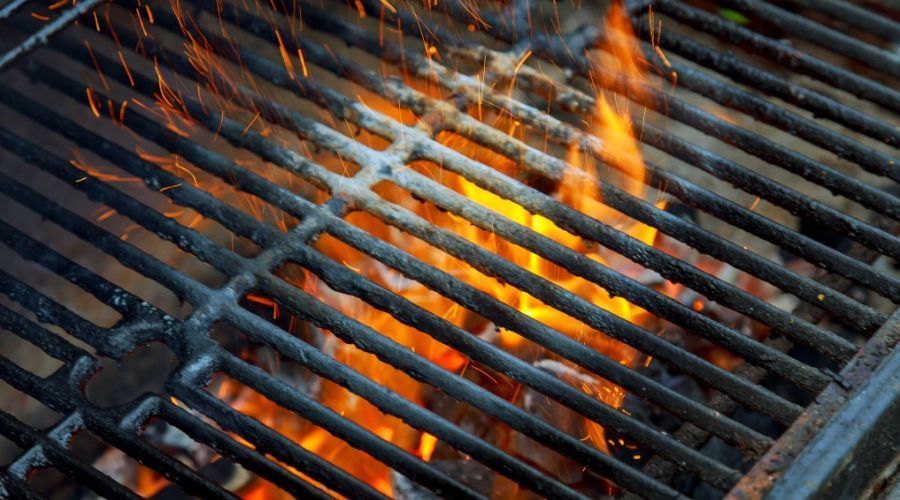Mastering the Art of Smoking with Grill Grates
Written By James Morgan
Barbecue enthusiasts know that the secret to a great BBQ experience is not just in the quality of the meat or the type of wood chips used, but also in the tools and techniques employed. Among these, smoking with grill grates stands out as a transformative technique that can elevate your grilling game to a whole new level. Whether you're a seasoned grill master or a backyard BBQ novice, understanding how to effectively use grill grates for smoking is essential.

What are Grill Grates?
Grill grates are specialized cooking surfaces designed to enhance the grilling experience. They are typically made from materials like cast iron or stainless steel, which offer excellent heat retention and distribution. The design of grill grates allows for more even cooking, prevents flare-ups, and produces those coveted sear marks that every griller loves.
When used for smoking, grill grates offer a unique advantage. Their ability to maintain consistent temperatures makes them ideal for the low-and-slow cooking method essential for smoking. The gap between the grates allows smoke to circulate around the food, infusing it with rich, smoky flavors. Learn more about the science of grill grates and why they're a must-have for any BBQ enthusiast.
The Benefits of Smoking with Grill Grates
Smoking with grill grates offers several advantages that can significantly enhance your BBQ experience:
Improved Flavor
When smoking, the goal is to impart a deep, smoky flavor that permeates the meat. Grill grates allow for even smoke distribution, ensuring that every bite is infused with delicious smokiness. By using different types of wood chips, such as hickory, mesquite, or applewood, you can customize the flavor profile to your liking.
Consistent Cooking Temperature
One of the biggest challenges in smoking is maintaining a consistent temperature over an extended period. Grill grates help to stabilize the temperature by providing a uniform cooking surface. This consistency is crucial for achieving tender, juicy results, especially when smoking larger cuts of meat like brisket or pork shoulder.
Reduced Flare-Ups
Flare-ups are the enemy of any griller, causing uneven cooking and burnt spots. The design of grill grates minimizes flare-ups by channeling excess grease away from the flames. This not only reduces the risk of flare-ups but also ensures a cleaner, more efficient smoking process. For tips on preventing sticking and flare-ups, check out our guide on avoiding sticking on grill grates.
How to Smoke with Grill Grates
Now that we've covered the benefits of smoking with grill grates, let's dive into the step-by-step process of using them effectively:
Step 1: Prepare Your Grill Grates
Before you start smoking, it's essential to season your grill grates. This involves applying a thin layer of oil and heating them to create a non-stick surface. Seasoning not only prevents food from sticking but also helps to protect the grates from rust. Here's a useful resource on how to season grill grates.
Step 2: Set Up Your Grill
For smoking, you'll want to set up your grill for indirect cooking. This means placing the heat source (charcoal or gas burners) on one side of the grill and the meat on the other. Place a drip pan underneath the grates to catch any drippings and prevent flare-ups. If you're using a charcoal grill, consider using a chimney starter to light the coals without lighter fluid.
Step 3: Add Smoke
To achieve that signature smoky flavor, you'll need to add wood chips to your grill. Soak the chips in water for at least 30 minutes, then place them directly on the coals or in a smoker box for gas grills. Close the lid to allow the smoke to circulate around the meat.
Step 4: Monitor the Temperature
Maintaining a consistent temperature is key to successful smoking. Aim for a temperature range of 225-250F (107-121C). Use a reliable meat thermometer to monitor the internal temperature of the meat, ensuring it reaches the desired doneness.
Common Mistakes to Avoid
Even experienced grillers can encounter challenges when smoking with grill grates. Here are some common mistakes to avoid:
Using Too Much Smoke
While smoke is essential for flavor, too much of it can lead to a bitter taste. Use a moderate amount of wood chips and replenish them as needed throughout the smoking process.
Not Cleaning the Grates
After each use, clean your grill grates to remove any residue or buildup. This will prevent off-flavors from contaminating future meals and extend the lifespan of your grates. For cleaning tips and tricks, visit Petromax's cleaning guide.
Skipping the Resting Period
Once the meat reaches the desired temperature, let it rest for 10-15 minutes before slicing. This allows the juices to redistribute, resulting in a more tender and flavorful final product.
:max_bytes(150000):strip_icc()/GettyImages-629449905-921b6cf5d1f84c15bcd4c3b85f0b5cbb.jpg)
FAQ
How do I prevent flare-ups when smoking?
Use a drip pan to catch excess drippings and consider using grill grates designed to minimize flare-ups. Check out our article on heat zone setup with grill grates for more tips.
Can I use grill grates on any type of grill?
Yes, grill grates are versatile and can be used on most charcoal, gas, and pellet grills. They are designed to fit a variety of grill sizes and shapes.
What types of wood are best for smoking?
The best wood for smoking depends on personal preference and the type of meat you're cooking. Popular choices include hickory, mesquite, applewood, and cherry.
By mastering the art of smoking with grill grates, you can create mouth-watering BBQ dishes that will impress family and friends. With the right techniques and a little practice, you'll be well on your way to becoming a grill master. For more grilling tips and recipes, visit our blog on low and slow on grill grates.



